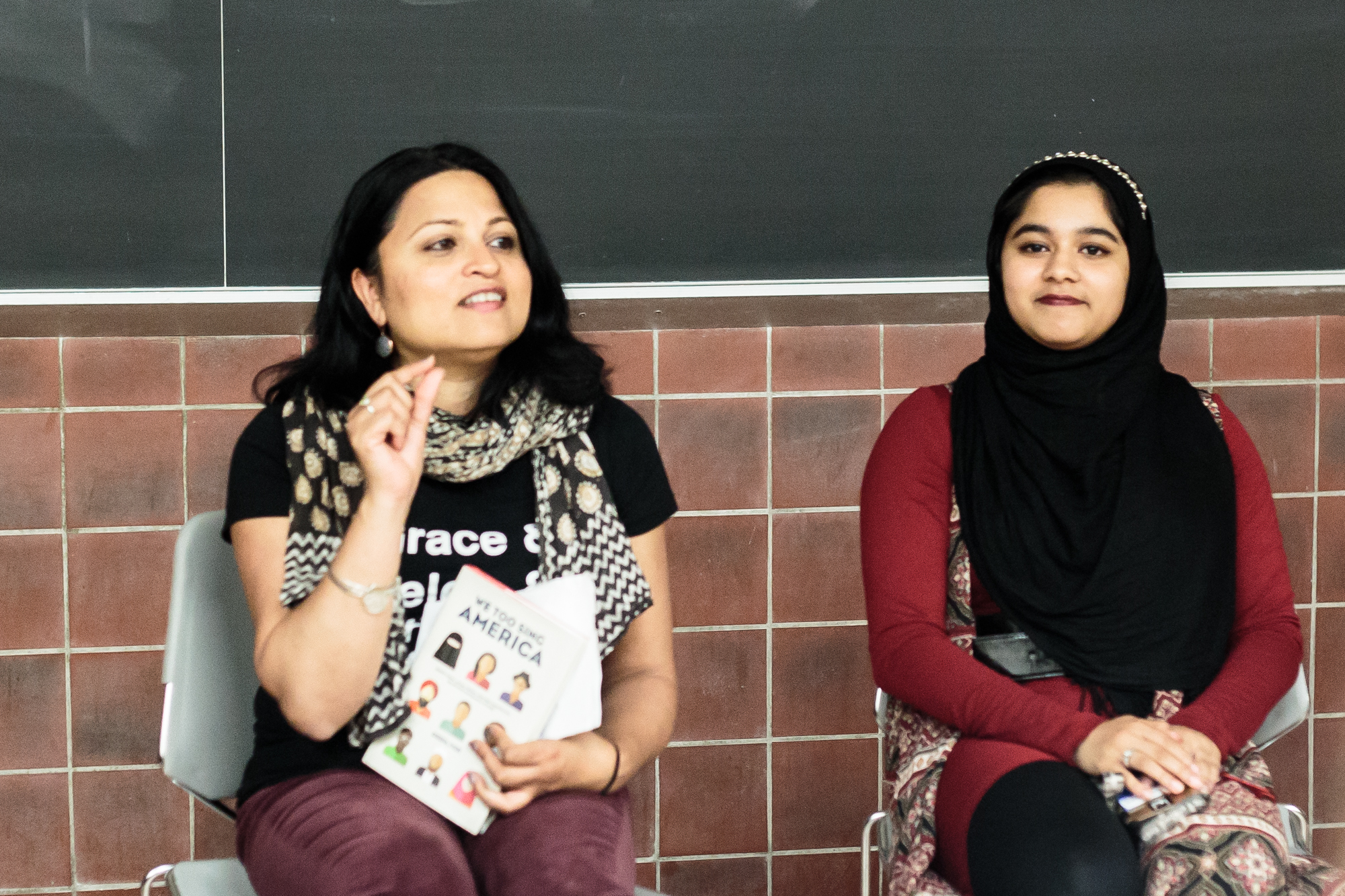A panel at the University of Maryland Tuesday opened discussion on the personal experiences of South Asian, Arab, Muslim and Sikh people in a post-9/11 America.
Maryland Discourse hosted the panel in Tydings Hall. One panelist, Navraj Singh, a junior economics and finance major, described how he came to Kentucky with his family from India. He had the only Indian family in the area, and as he grew older, faced discrimination that caused him to question his Sikh faith.
“I definitely questioned keeping a turban on,” Singh said. “Every day I went to school, or went out with my friends, I would always get discriminated against. If it wasn’t for my community … I wouldn’t have kept it [on] today.”
Singh said the Sikhs embraced the turban as a way to set themselves apart in a time when they were being persecuted. After 9/11, he said he had to continue wearing a turban to show his faith and to make a statement that he was just as human as anyone else.
Another panelist, Deepa Iyer, is the author of We Too Sing America, a book that addresses post-9/11 racial discrimination. She is also an activist who grew up in Louisville, Kentucky. Iyer said the discrimination people face shows up outside regions where it might be expected, too.
“There is this perception we have that on the coast or metropolitan areas or diverse campuses … that there is going to be an extra level of sensitivity or tolerance,” Iyer said. “I’m not sure that is necessarily the case.”
Discrimination can take many forms, the panelists agreed, but it can be concentrated into three distinct trends: Islamophobia, xenophobia and racial anxiety. While Iyer described some discrimination as seemingly “polite,” panelist Samiha Ahmed, who volunteers with the Muslim Student Association and recently started wearing a hijab, described them as overwhelming.
“Last year … the UNC Chapel Hill shooting happened and then the whole fiasco with SEE showing American Sniper happened, and it was kind of eye opening,” said Ahmed, a sophomore physiology and neurobiology and public health science major. “The fact that I had just started wearing a headscarf and … the world might see me differently.”
The discussion turned toward the xenophobia and racial anxiety trends in the country, especially in relation to the current election cycle and presidential candidate Donald Trump. Ahmed said the phenomenon of racist rhetoric surrounding Trump’s campaign is anything but new.
“Trump is the poster child for tensions that already existed,” she said.
Iyer mentioned a cultural shift away from what she calls “racial dog whistles,” or coded phrases in a language that allow individuals to say racist things without being upfront, she said. Citing controversy over a mosque in Murfreesboro, Tennessee, she said rhetoric is becoming much more overtly anti-Muslim.
The depiction of groups of people in mainstream media is a subject that affected each panelist differently. Singh said there have not been many negative depictions of Sikhs in the media because there have not been many depictions at all.
On the other hand, Ahmed said there were two common portrayals of Muslims, based on where they came from. Muslims from the Middle East are often depicted as the stereotypical “terrorist,” while South Asian Muslims are shown as “almost comedic … always the engineering role or the really nerdy kid,” she said.
Iyer argued in many cases, depictions of Muslims are “negative or one dimensional,” but cultural narratives are shifting. She added that while mainstream media is struggling to portray people of color correctly, non-mainstream media is starting to include more diversity.
Sachin Swami, a freshman environmental science and technology major, said the event did a good job demonstrating a bond between these discriminated minorities.
“I wasn’t really aware at how the minorities kind of stick together, as far as the Muslims and Sikhs,” he said. “I thought it was really interesting because I had never heard that before.”



